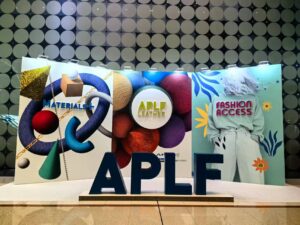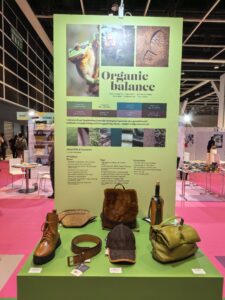The Asia Pacific Leather Fair (APLF) 2024, held in Hong Kong, once again brought together the best and brightest in the global leather industry. Among the many trends and innovations showcased, vegetable-tanned leather stood out as a focal point, reflecting the industry’s growing commitment to sustainability and eco-conscious practices.
This year’s event highlighted the versatility, beauty, and environmental benefits of vegetable-tanned leather, offering a glimpse into its promising future. Here’s a detailed recap of the key takeaways and trends surrounding vegetable-tanned leather at APLF 2024.

What is Vegetable-Tanned Leather? Vegetable-tanned leather is crafted using natural tannins extracted from plant sources such as tree bark, leaves, and fruits. Unlike chrome tanning, which relies on synthetic chemicals, vegetable tanning is an ancient, eco-friendly process that produces durable, biodegradable, and aesthetically unique leather.
This method aligns perfectly with the global shift toward sustainable and ethical manufacturing practices. Vegetable-Tanned Leather at APLF 2024 This year’s APLF showcased a wide range of vegetable-tanned leather products, from luxury fashion items to functional accessories.
Exhibitors highlighted the material’s natural beauty, durability, and environmental benefits, making it a standout choice for brands and consumers alike.
Here are the key highlights:
1. Sustainability Takes the Spotlight Vegetable-tanned leather was celebrated for its minimal environmental impact. Exhibitors emphasized the use of renewable plant-based tannins and the absence of harmful chemicals, making it a preferred choice for eco-conscious brands. The leather’s biodegradability also addresses growing concerns about waste and pollution in the fashion and manufacturing industries.
2. Timeless Aesthetics One of the most striking features of vegetable-tanned leather is its natural, rich patina that develops over time. At APLF 2024, exhibitors showcased stunning examples of how this material ages gracefully, gaining character and depth with use. This unique quality makes it a favorite for luxury goods, including handbags, wallets, and footwear.
3. Versatility in Applications From high-end fashion to automotive interiors and home décor, vegetable-tanned leather demonstrated its versatility at the event. Exhibitors presented innovative uses of the material, proving that sustainability does not compromise functionality or style.
4. Artisanal Craftsmanship Vegetable tanning is a labor-intensive process that requires skill and patience. APLF 2024 highlighted the artisanal aspect of this craft, with live demonstrations and workshops that showcased the meticulous techniques involved. This focus on craftsmanship resonated with attendees who value tradition and quality.

Trends in Vegetable-Tanned Leather for 2024
The APLF 2024 revealed several emerging trends in the vegetable-tanned leather sector:
• Rising Demand for Eco-Friendly Materials: Consumers and brands are increasingly prioritizing sustainable options, driving the demand for vegetable-tanned leather.
• Customization and Personalization: Advances in dyeing and finishing techniques allow for greater customization, enabling designers to create unique, one-of-a-kind pieces.
• Transparency in Supply Chains: Exhibitors emphasized traceability, ensuring that their vegetable-tanned leather is sourced and produced ethically.
• Innovative Blends: Some exhibitors showcased hybrid materials that combine vegetable-tanned leather with recycled or plant-based components, further enhancing sustainability.
Why Vegetable-Tanned Leather is the Future Vegetable-tanned leather’s combination of sustainability, durability, and aesthetic appeal positions it as a key player in the future of the leather industry. As consumers become more environmentally conscious, the demand for eco-friendly materials like vegetable-tanned leather is expected to grow exponentially.
Exhibitors at APLF 2024 demonstrated that this material is not just a trend but a long-term solution for a more sustainable and ethical industry.
Final Thoughts APLF 2024 was a testament to the enduring appeal and potential of vegetable-tanned leather. Its natural beauty, environmental benefits, and versatility make it a standout choice for brands and consumers alike. As the leather industry continues to evolve, vegetable-tanned leather is poised to play a central role in shaping a more sustainable future.
For businesses and designers looking to embrace eco-friendly materials, vegetable-tanned leather offers a perfect blend of tradition, innovation, and sustainability. Explore the possibilities of this remarkable material and join the movement toward a greener, more responsible leather industry.



